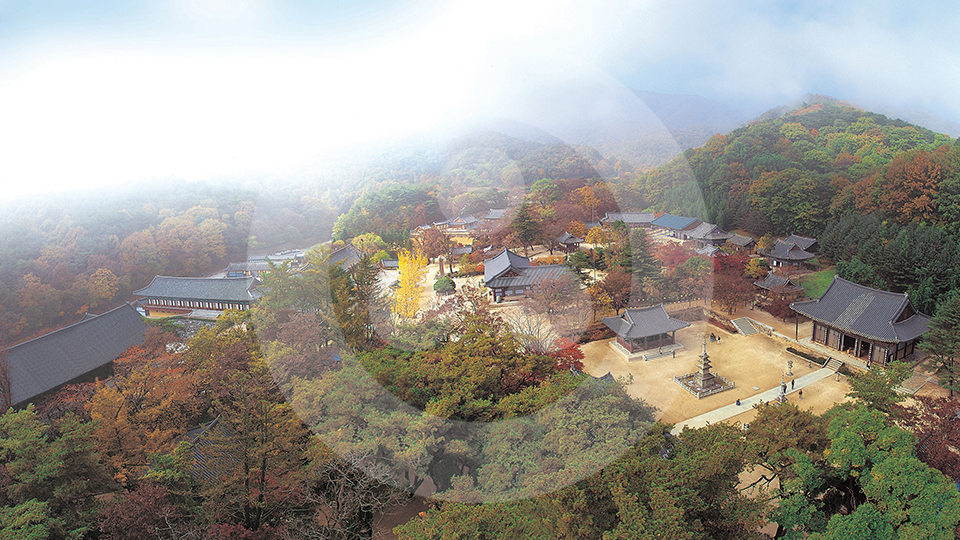Jogye Order of Korean Buddhism

Most Korean temples feature at least one main dharma hall which enshrines a main buddha and a pagoda or two in front of it; other structures are placed in accordance with the topography. At most temples, one has to pass through several gates to reach the main dharma hall, and each of these gates reflects a Buddhist teaching. The first gate at the entrance to a temple compound is called the One Pillar Gate (Ilju-mun). This gate has pillars aligned in one straight line, which symbolizes collecting one’s scattered, unfocused mind into oneness; this is necessary for entering the “Pure Land” of a temple. After passing this first gate, at most temples one passes the following gates in this order: the Vajra Gate (Geumgangmun) where vajra warriors protect the temple; the Gate of Heavenly Kings (Cheonwang-mun) which enshrines the four heavenly kings who guard the four cardinal directions to protect the Buddhadharma; the Gate of Non-Duality (Burimun) which symbolizes the non-duality of good and evil, birth and death, the secular world and the Pure Land; and lastly, the Gate of Liberation (Haetal-mun) which represents the freedom and/or enlightenment that can be achieved by following the teachings of the Buddha.
After passing through all of these gates, one arrives at the courtyard of the main dharma hall, which has a pagoda or two. Enshrining the cremains of the Buddha or sutras, a pagoda symbolizes the Buddha and his teachings. Pagodas are usually located in the center of a temple, and in Korea, the tradition of establishing pagodas began with wooden pagodas, and later, stone pagodas were built. Unlike other countries, stone pagodas became the standard in Korea, and are considered a distinctive feature of Korean Buddhism.
In the courtyard where a pagoda (or pagodas) is established, diverse dharma halls might be found in each direction, and each hall is named after the buddha or bodhisattva enshrined within. The Hall of the Great Hero (Daeung-jeon) is dedicated to Shakyamuni, the historical Buddha, and functions as the central structure in a temple compound. The Hall of Great Tranquil Light (Daejeokgwangjeon) enshrines Vairocana Buddha, and the Paradise Hall (Geungnak-jeon) is dedicated to Amitabha Buddha.


